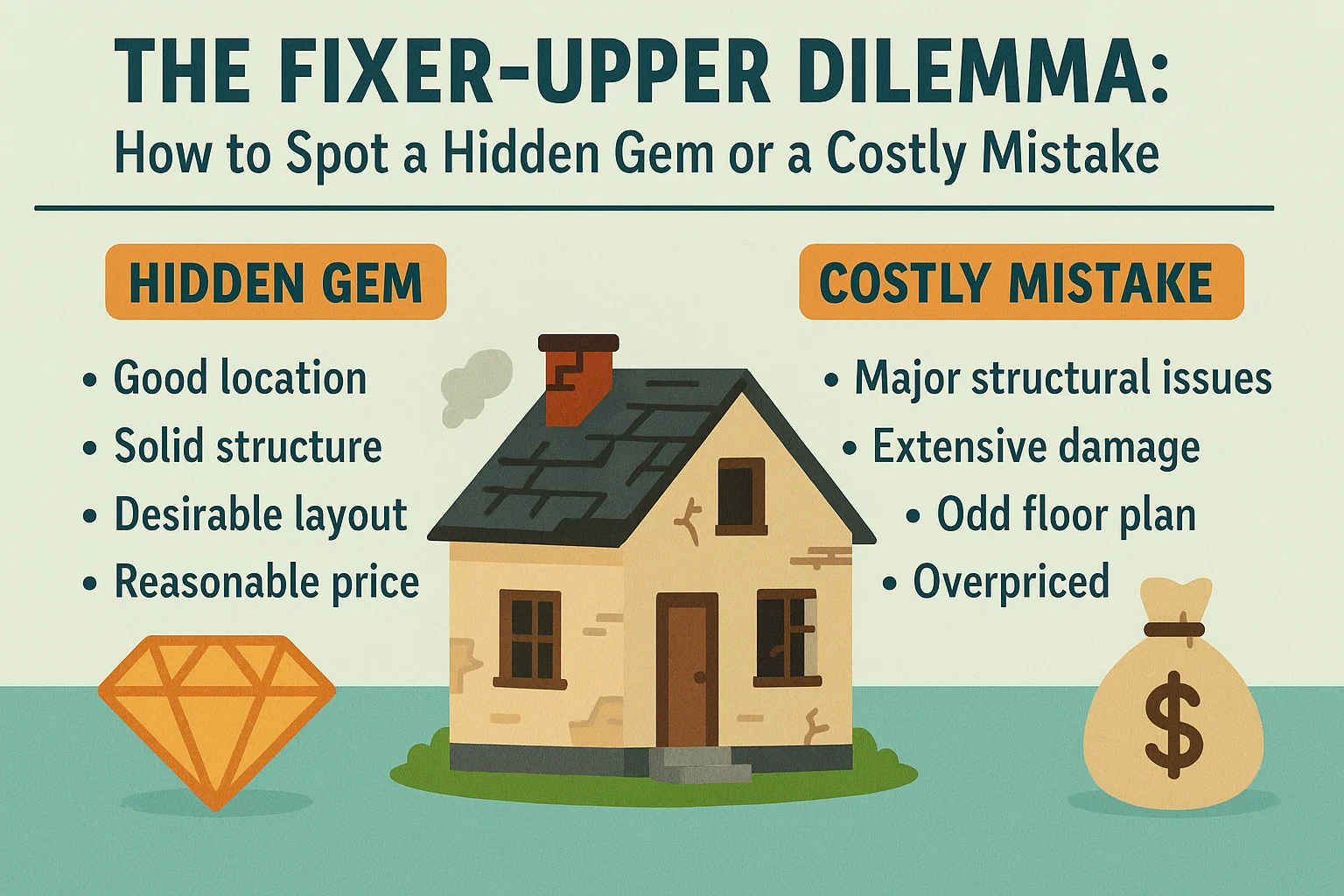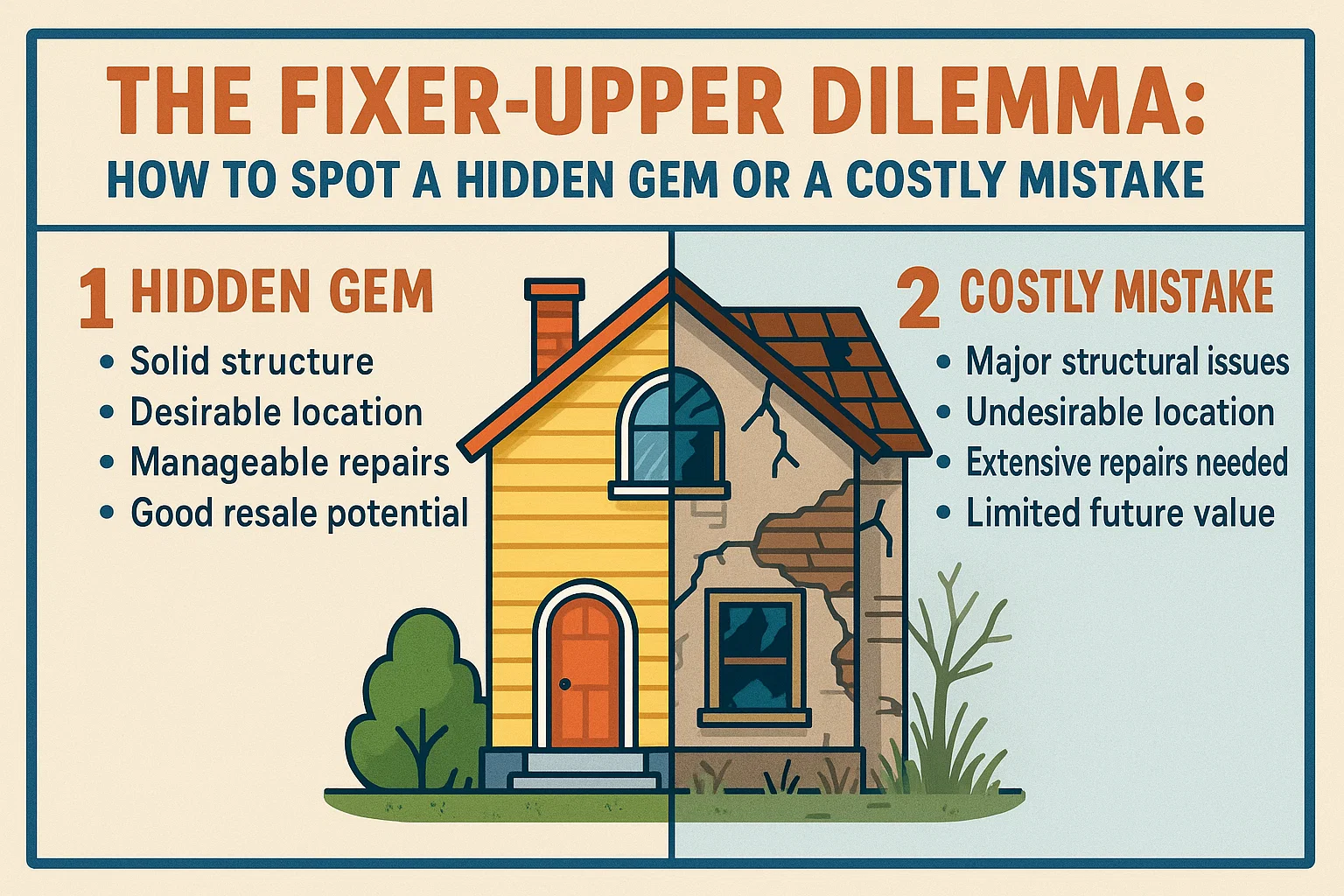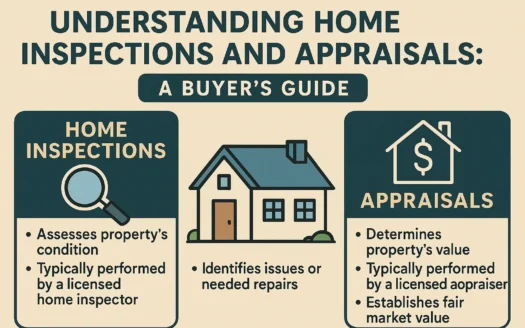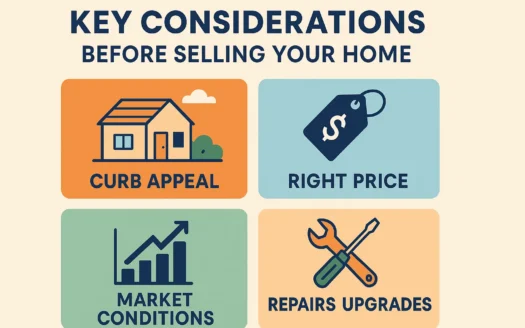The Fixer-Upper Dilemma: How to Spot a Hidden Gem or a Costly Mistake

The Fixer-Upper Dilemma: How to Spot a Hidden Gem or a Costly Mistake
Few homebuyers can resist the allure of a cheap property in a desirable neighborhood—especially one that promises a profitable return after a little elbow grease. The idea is simple: buy low, invest in upgrades, and reap the rewards. But while some fixer-uppers become dream homes, others spiral into costly disasters. Here’s how to navigate the risks and rewards of buying a fixer-upper.
Where to Start Your Search
Finding a property with potential requires effort. Drive through target neighborhoods to spot “For Sale by Owner” signs, or partner with a realtor experienced in fixer-uppers. Foreclosure auctions often list distressed properties, but be prepared to compete with seasoned investors.
Never Skip the Inspection
Even in competitive markets, skipping a home inspection is a gamble. Hidden water damage, mold, structural flaws, or environmental hazards like radon can turn a bargain into a financial black hole. A professional inspection will reveal deal-breaking issues and help you budget realistically.
Crunch the Numbers Carefully
Compare the home’s price to move-in-ready comparables in the area. Subtract the purchase price from the median value of nearby homes to estimate your renovation budget. Always factor in extra funds for surprises like material price hikes, delays, or temporary housing during repairs.
Avoid Major Structural Red Flags
Steer clear of properties with foundation cracks, severe water damage, or unstable soil. These issues often require expensive, time-consuming fixes. Focus on homes that are structurally sound but cosmetically dated—think peeling paint or outdated fixtures.
Look for Houses That Need Cosmetic Upgrades
Prioritize properties with superficial flaws that are cheaper to address. Ideal candidates might have:
- Ugly wallpaper or old paint
- Damaged drywall or scuffed floors
- Dated light fixtures or appliances
- Overgrown landscaping or neglected lawns
Embrace DIY Opportunities
Simple projects like painting, installing cabinets, or laying tile can save thousands in labor costs. Just be realistic about your skills and timeline—delays can add up quickly.
Key Takeaways
- Inspect thoroughly: Uncover hidden issues before committing.
- Budget wisely: Include a buffer for unexpected costs.
- Focus on cosmetics: Avoid properties needing major structural work.
- DIY where possible: Sweat equity boosts your investment’s value.
Final Thoughts
A fixer-upper can be a smart path to homeownership or a profitable investment—if approached with caution. By prioritizing minor repairs over major overhauls and staying within budget, you can transform an overlooked property into a valuable asset without falling into a money pit.




